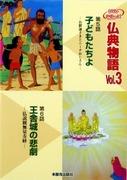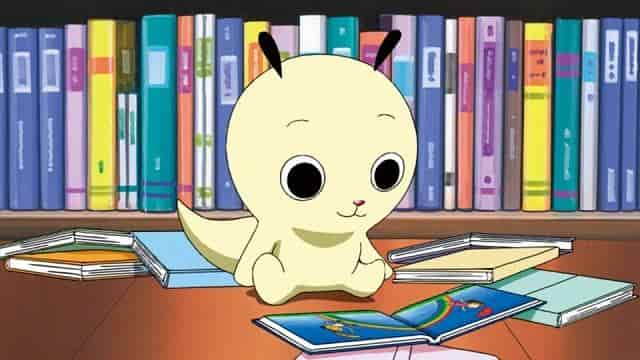Buddhist Tales 6: The Tragedy of Rajagriha - A masterpiece of animation with deep emotion and historical weight

Buddhist Tales 6: The Tragedy of Rajagriha - A deeply insightful and moving story"Buddha Scripture Story 6: The Tragedy of Rajagriha", released as an OVA on March 1, 1986, has captivated many viewers with its unique theme and deep insight. Although this work is based on Buddhist teachings, it is also a very moving human drama. Below, we will introduce detailed information and reviews of this work, as well as recommended points. Overview
story"Buddhist Tales 6: The Tragedy of Rajagriha" is a story set in the ancient Indian city of Rajagriha. The story revolves around the relationship between Bimbisara, the king of Rajagriha, and his son Ajatashatru. While Bimbisara is influenced by the teachings of Buddhism and pursues peace and compassion, Ajatashatru is unable to understand his father's teachings and becomes obsessed with power and desire. This conflict between father and son is at the heart of the story, which ultimately ends in tragedy. Set against the backdrop of Buddhist teachings, the film depicts the complexities of human relationships, family ties, and the horror of power. The contrast between Bimbisara's compassion and Ajatashatru's lust provides viewers with deep emotions and opportunities to ponder. characterBimbisaraBimbisara is the king of Rajagriha and is inspired by Buddhist teachings. He is portrayed as a king who pursues peace and compassion, and puts the welfare of his people first. However, his relationship with his son Ajatashatru gradually deteriorates, and ultimately ends in tragedy. Bimbisara's character embodies the teachings of Buddhism, but also depicts human weakness and suffering, evoking deep empathy from the viewer. AjatashatruAjatashatru is the son of Bimbisara and is obsessed with power and desire. He is unable to understand his father's teachings and gradually comes into conflict with his father. Ajatashatru's character symbolizes the horror of power and the depth of human desire, making a strong impression on the viewer. His actions ultimately lead to a tragic ending, but the viewer can feel his suffering and conflict along the way. Background"Buddhist Scriptures 6: The Tragedy of Rajagriha" was produced as a joint project between Honganji, MK and Visual 80. Honganji is said to have produced this work to spread the teachings of Buddhism. MK and Visual 80 contributed animation and video technology, respectively. This work aims to convey Buddhist teachings to a wider audience by expressing them in the form of animation. Evaluation and Impressions"Buddhist Tales 6: The Tragedy of Rajagriha" has been highly praised by many viewers for its profound themes and moving storyline. In particular, the portrayal of the father-son relationship between Bimbisara and Ajatashatru left a strong impression on viewers, and many people were made to think about family ties and the horror of power through this work. In addition, although it is a story set against the backdrop of Buddhist teachings, it has also been praised for being a very moving human drama. The quality of the animation is also high, with the ancient Indian scenery and the characters' expressions carefully drawn in detail. In particular, the scenes depicting Bimbisara's compassionate expression and Ajatashatru's suffering evoke strong emotions in the viewer. The music also plays a role in enhancing the atmosphere of the story, making this a highly polished work overall. Recommended points"Buddhist Tales 6: The Tragedy of Rajagriha" is recommended for the following reasons: 1. Deep themes and moving storiesThis work has a deep theme and a moving story based on Buddhist teachings. Through the father-son relationship between Bimbisara and Ajatashatru, you will be made to think about the ties of family and the horror of power. It is also a very moving human drama that leaves a strong impression on the viewer. 2. High animation qualityThe quality of the animation is also very high, with the ancient Indian scenery and the characters' expressions carefully drawn in detail. In particular, the scenes depicting Bimbisara's compassionate expression and Ajatashatru's suffering evoke strong emotions in the viewer. The music also plays a role in enhancing the atmosphere of the story, making this a highly polished work overall. 3. Opportunity to learn Buddhist teachingsThis work expresses Buddhist teachings in the form of animation and provides an opportunity for viewers to learn from these teachings. Through the contrast between Bimbisara's compassion and Ajatashatru's desire, viewers will be able to gain a deeper understanding of Buddhist teachings. The story will also make viewers reflect on their own lives and values. Related works and recommendationsIf you enjoyed "Buddhist Tales 6: The Tragedy of Rajagriha," we also recommend the following related works: 1. Buddhist Tales Series"Buddhist Tales 6: The Tragedy of Rajagriha" is part of the "Buddhist Tales" series. This series depicts various stories based on Buddhist teachings in animation, providing viewers with deep insight and inspiration. In particular, "Buddhist Tales 1: The Life of Shakyamuni" and "Buddhist Tales 2: The Enlightenment of Shakyamuni" will help you gain a deeper understanding of Buddhist teachings. 2. Other Buddhism-related animeIf you enjoyed "Buddha Scripture Story 6: The Tragedy of Rajagriha," we recommend other Buddhist-related anime. For example, "Buddha -The Way of the Buddha-" and "Saint Young Men" depict Buddhist teachings through humor and drama, providing viewers with a new perspective. Also, "Asura" and "Tenjo Tenge" allow you to enjoy epic stories set against the backdrop of Buddhist teachings. 3. Anime that depicts human drama"Buddhist Scriptures 6: The Tragedy of Rajagriha" is also a very moving human drama. Therefore, other anime that depict human drama are also recommended. For example, "CLANNAD" and "Anohana: The Flower We Saw That Day" are moving works that depict family ties and friendship. Also, "Orange" and "Your Lie in April" are works that depict the suffering and growth of youth, providing deep emotions to viewers. summary"Tales of the Scriptures 6: The Tragedy of Rajagriha" is a work with deep themes and a moving story based on Buddhist teachings. Through the father-son relationship between Bimbisara and Ajatashatru, the work will make you think about family ties and the horror of power. The high quality animation also evokes strong emotions in the viewer. This work not only provides an opportunity to learn about Buddhist teachings, but is also a deeply moving human drama, making it a work that has been loved by many viewers. Please watch this work and experience its deep insights and emotions. |
>>: A deep insightful and moving review of Buddhist Stories 5: Children - The Buddha and Uncle Nichi
Recommend
"Bumblebee" Mainland Promotion Ambassador Announces Wang Junkai and Bumblebee Protect Humanity
The movie "Bumblebee" will be released ...
A thorough analysis of the appeal and emotion of "Yondemasu yo, Azazel-san. Nakiushihen"!
"Yondemasu yo, Azazel-san. Crying Cow Editio...
The final season of "House of Cards" trailer shows the female president making a strong statement
Netflix released the trailer for the final season...
Sakurajima Mai Bunny Girl Figure Appreciation Sexy Black Silk Girl's Tempting Body
Recently, Aniplex×Wing's "The Idiot Does...
GALL FORCE Earth Chapter: A thorough review of the epic story and character depth
The appeal and evaluation of "GALL FORCE Ear...
A human-powered battleship!? The appeal and evaluation of "Shiokaze Sawakaze"
Human-powered battleship!? Shiokaze Sawakaze - An...
The second season of the new work "Phantom Zone" by Junji Ito, the master of horror, has been launched
Today, September 14th, the second season of "...
GSC Nendoroid "Sadako DX" "Sadako" is available for pre-order at a price of 384 yuan
GSC recently launched a new clay figurine: "...
Stephen Chow's "Women's Soccer" set exposed special effects action netizens: Shaolin Soccer
Recently, the shooting scene of the new movie &qu...
Yamada-kun and the Seven Witches DVD (15) Limited Edition Review: A fascinating story and what are the bonuses worth?
Detailed review and recommendation of "Yamad...
"One Piece" officially announced that it will be suspended for three weeks. Oda needs to collect materials and ideas
The Shueisha editorial department announced today...
Evaluation and impressions of the limited edition with anime DVD of "Twittering Birds Never Fly 7"
The appeal and evaluation of "Twittering Bir...
Childhood memories are back! The animation of "Astro Boy" announced that it will be restarted with 52 episodes
According to foreign media Anitrendz today (June ...
We'll give a thorough evaluation of the situation in which we ended up becoming heroines! Is it really interesting?
All-round evaluation and recommendation of "...
Better Call Saul: John Wick 2: The Return of the Stars and Director Confirmed
According to DEADLINE, it was officially announce...









